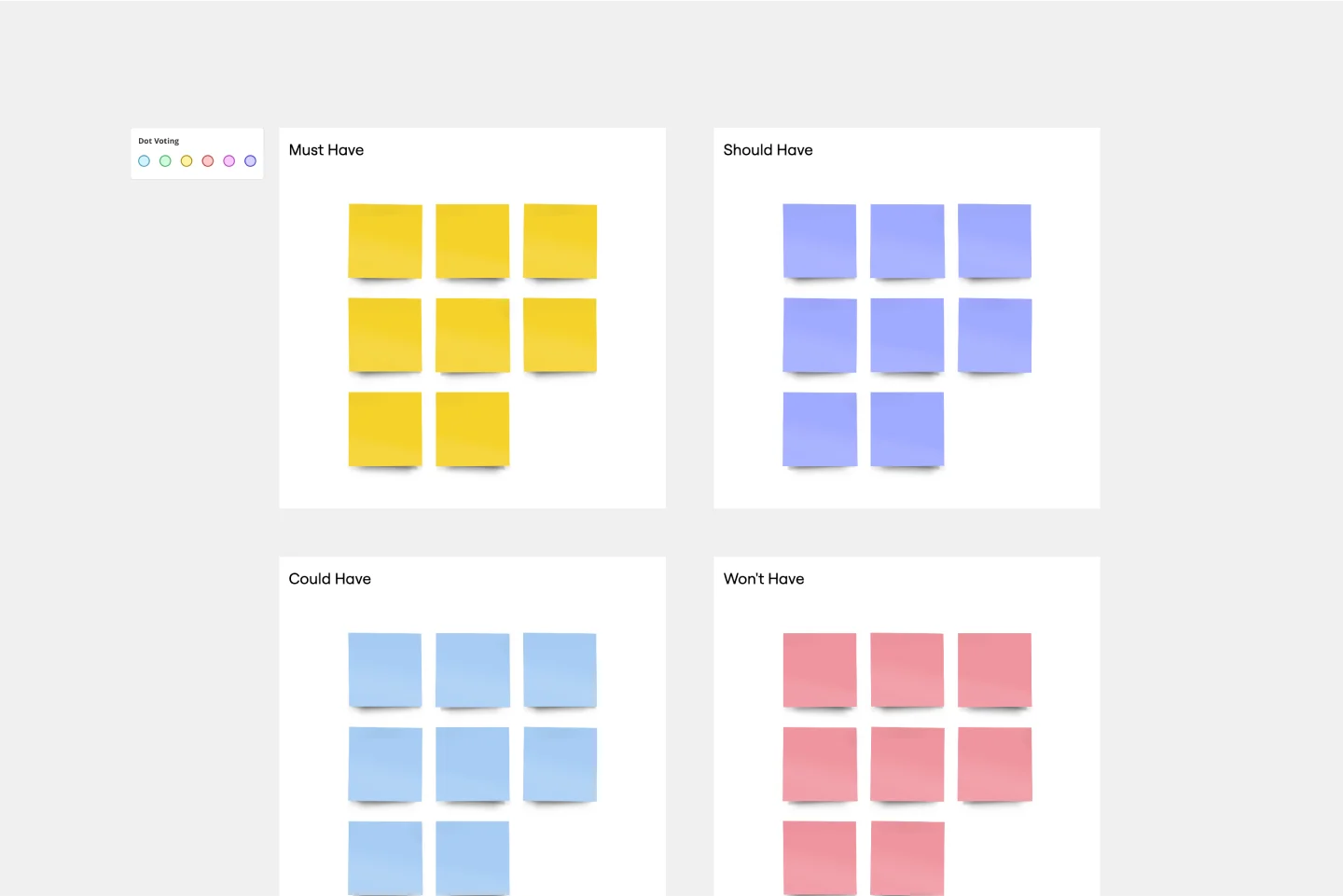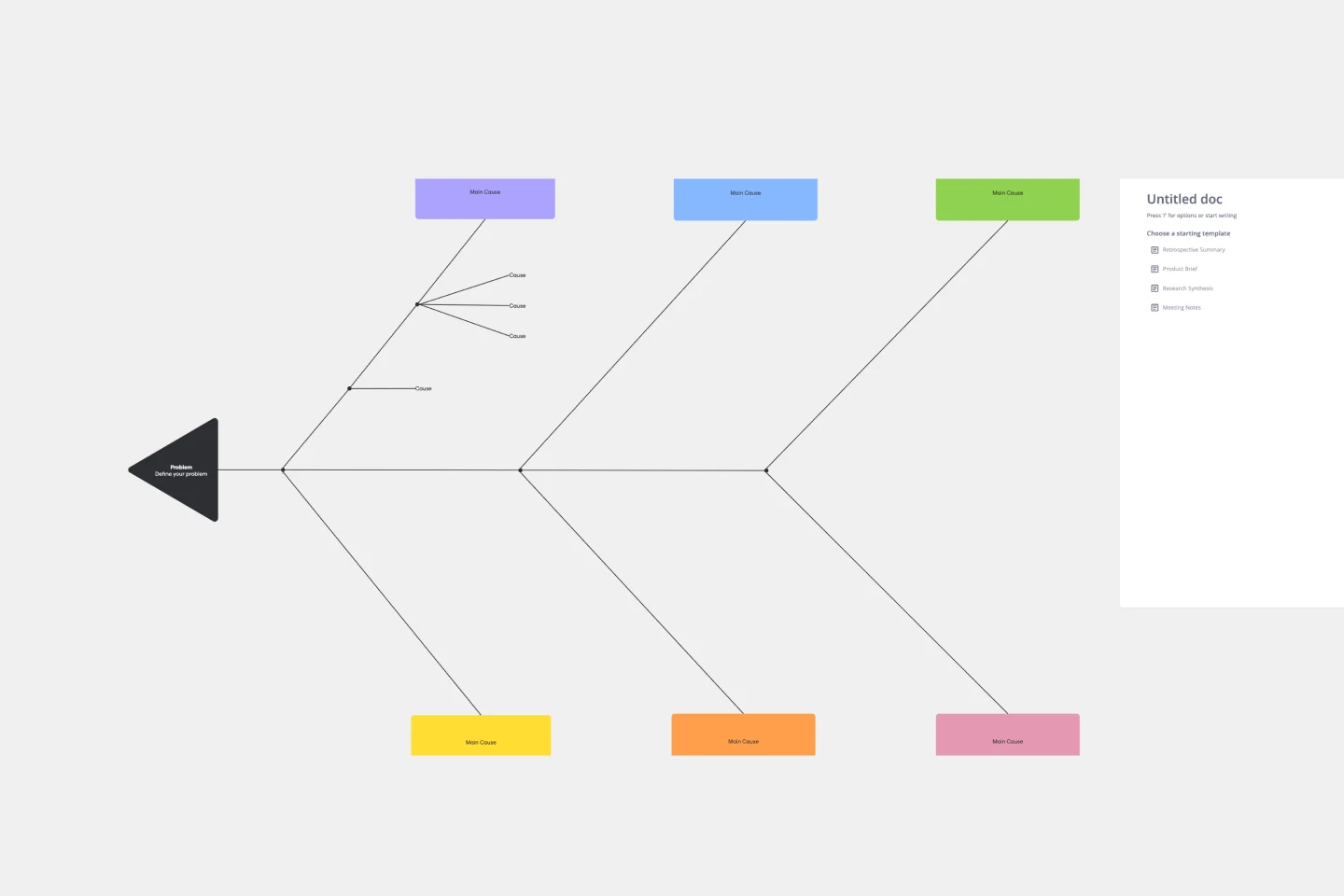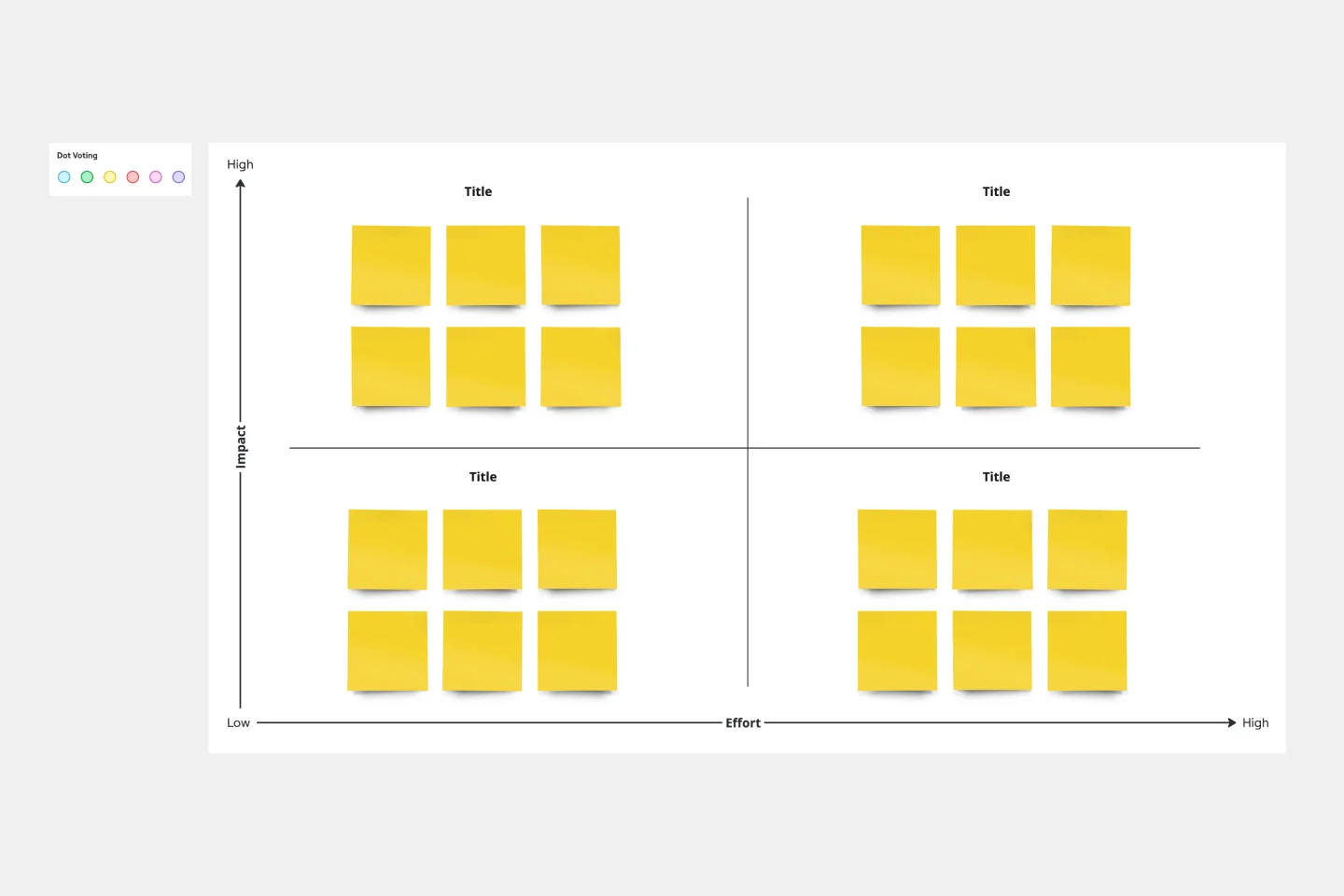FMEA Analysis Templates
Miro's FMEA analysis templates help you identify and address potential risks effortlessly. Whether you're evaluating processes, improving quality, or mitigating failures, these templates provide a clear structure to assess impact, likelihood, and prioritize actions for better decision-making and enhanced reliability.
7 templates
Impact/Effort Matrix Template
10 likes898 uses
Impact/Effort Matrix Template
Growing organizations have countless to-do’s and only so many hours in a day (or weeks before a big launch) to get them done. That’s where an impact effort matrix comes in. It gives you a quick visual guide to help prioritize your tasks and know exactly what’s worth doing. Using our template, you can create a matrix that organizes your activities into four main categories: quick wins that are low effort, effort-intensive projects that provide long-term returns, fill-ins that are low effort but low value, and time-wasters.
MoSCoW Matrix Template
4 likes345 uses
MoSCoW Matrix Template
Keeping track of your priorities is a big challenge on big projects, especially when there are lots of deliverables. The MoSCoW method is designed to help you do it. This powerful technique is built on a matrix model divided into four segments: Must Have, Should Have, Could Have, and Won’t Have (which together give MoSCoW its name). Beyond helping you assess and track your priorities, this approach is also helpful for presenting business needs to an audience and collaborating on deliverables with a group of stakeholders.
Failure Mode Effects Analysis (FMEA) Workshop
9 likes174 uses5 Whys Template
3 likes169 uses
5 Whys Template
Ready to get to the root of the problem? There’s no simpler way to do it than the 5 Whys technique. You’ll start with a simple question: Why did the problem happen? Then you’ll keep asking, up to four more times, until the answer becomes clear and you can work toward a solution. And Miro’s features enhance the approach: You can ask team members questions in chat or @mention them in comments, and use color-coded sticky notes to call out issues that are central to the problem at hand.
Cause and Effect Diagram Template
2 likes109 uses
Cause and Effect Diagram Template
The Cause and Effect Diagram Template is a useful tool for analyzing complex relationships, identifying root causes of problems, and improving organizational processes. It can be customized to fit user's unique needs and provides a structured framework for analysis. Teams can use real-time collaborative analysis on the Miro platform to drive continuous improvement initiatives.
Action Priority Matrix Template
0 likes99 uses
Action Priority Matrix Template
You and your teammates probably have more ideas than resources, which can make it difficult to prioritize tasks. Use an Action Priority Matrix to help choose the order in which you will work on your tasks, allowing you to save time and money and avoid getting bogged down in unnecessary work. An Action Priority Matrix is a simple diagram that allows you to score tasks based on their impact and the effort needed to complete them. You use your scores to plot each task in one of four quadrants: quick wins, major projects, fill-ins, and thankless tasks.
FMEA Analysis Template
0 likes77 uses
FMEA Analysis Template
When you’re building a business or running a team, risk comes with the territory. You can’t eliminate it. But you CAN identify it and mitigate it, to up your odds of success. Failure Modes and Effects Analysis (FMEA) is a powerful tool designed to help you manage risk and potential problems by spotting them within a process, product, or system. And you’ll spot them earlier in your process—to let you sidestep costly changes that arise late in the game or, worse, after they’ve impacted your customers and their experience.

Explore more
About the FMEA analysis templates collection
Failure Mode and Effects Analysis (FMEA) is a systematic method for evaluating processes to identify where and how they might fail and assessing the relative impact of different failures. Our FMEA analysis templates help you streamline this process, making it accessible and efficient for teams of all sizes. These templates are perfect for professionals, especially beginners, who are looking to implement FMEA in their workflows. With Miro's visual capabilities, teams can collaborate seamlessly and visually map out potential risks and their mitigations.
Why you'll love our FMEA analysis templates
Using Miro's FMEA analysis templates offers many benefits:
Enhanced collaboration: Our visual tools, such as sticky notes and dot voting, make it easy for teams to brainstorm and prioritize potential failure modes and their effects.
User-friendly interface: The intuitive design of Miro's templates ensures that even beginners can quickly get up to speed with FMEA analysis.
Comprehensive risk assessment: The templates guide users through a detailed risk analysis process, helping to identify, evaluate, and mitigate risks effectively.
Real-time updates: Teams can work together in real-time, ensuring that everyone is on the same page and that updates are instantly visible to all members.
Customizable templates: Miro's FMEA templates can be tailored to fit the specific needs of your project, allowing for flexibility and adaptability.
How to use the FMEA analysis templates in Miro
Select the template: Start by choosing the FMEA analysis template from Miro's template library.
Define the scope: Clearly outline the process or product you are analyzing. This step sets the stage for a focused and effective FMEA.
Identify potential failure modes: Use sticky notes to list all possible ways the process or product could fail. Engage your team in brainstorming to ensure comprehensive coverage.
Assess the effects: For each failure mode, describe the potential effects on the process or product. This helps in understanding the impact of each failure.
Determine the causes: Identify the root causes of each failure mode. This step is crucial for developing effective mitigation strategies.
Evaluate the risks: Use dot voting to prioritize the failure modes based on their severity, occurrence, and detection. This helps in focusing on the most critical risks.
Develop action plans: Create action plans to address the high-priority risks. Assign responsibilities and set deadlines to ensure timely implementation.
Review and update: Regularly review the FMEA analysis to incorporate new information and ensure that the action plans are effective.
By following these steps, teams can use Miro's FMEA analysis templates to perform comprehensive risk assessments and create effective mitigation strategies. This approach not only enhances the quality and reliability of their processes and products but also encourages a culture of continuous improvement and proactive problem-solving.
Miro's FMEA analysis templates empower teams to thrive by providing a structured yet flexible approach to risk management. With Miro, you can turn complex risk assessments into collaborative and engaging activities, driving better outcomes for your projects.
